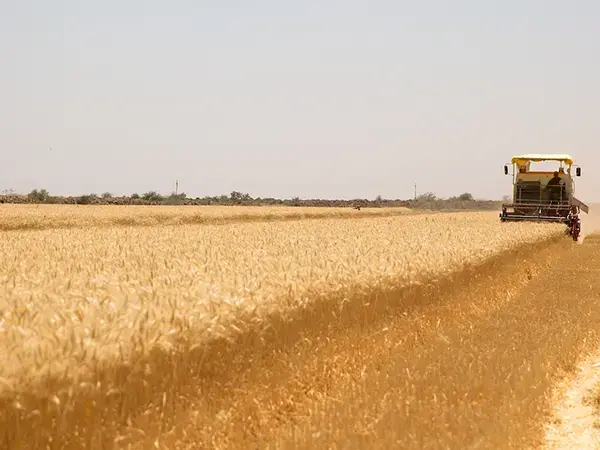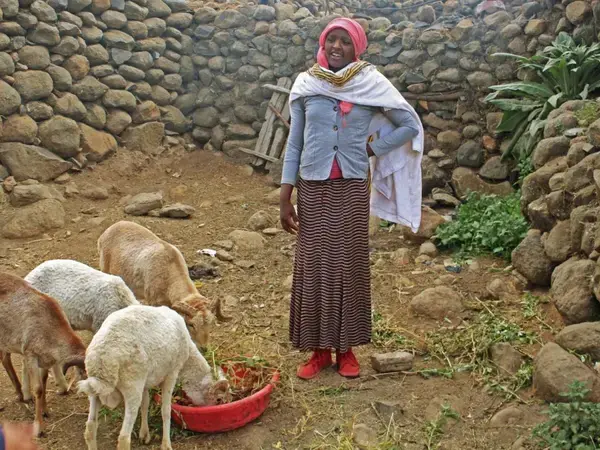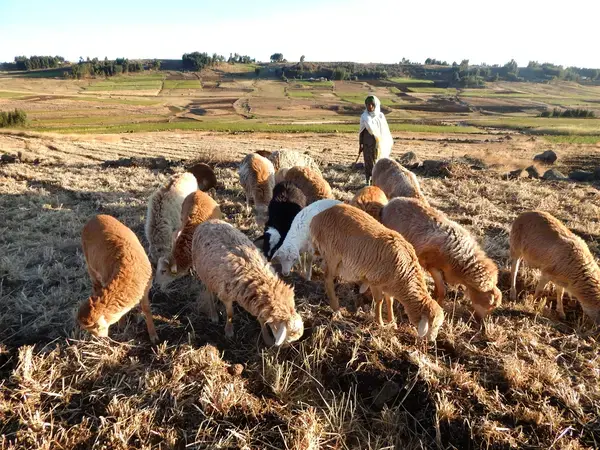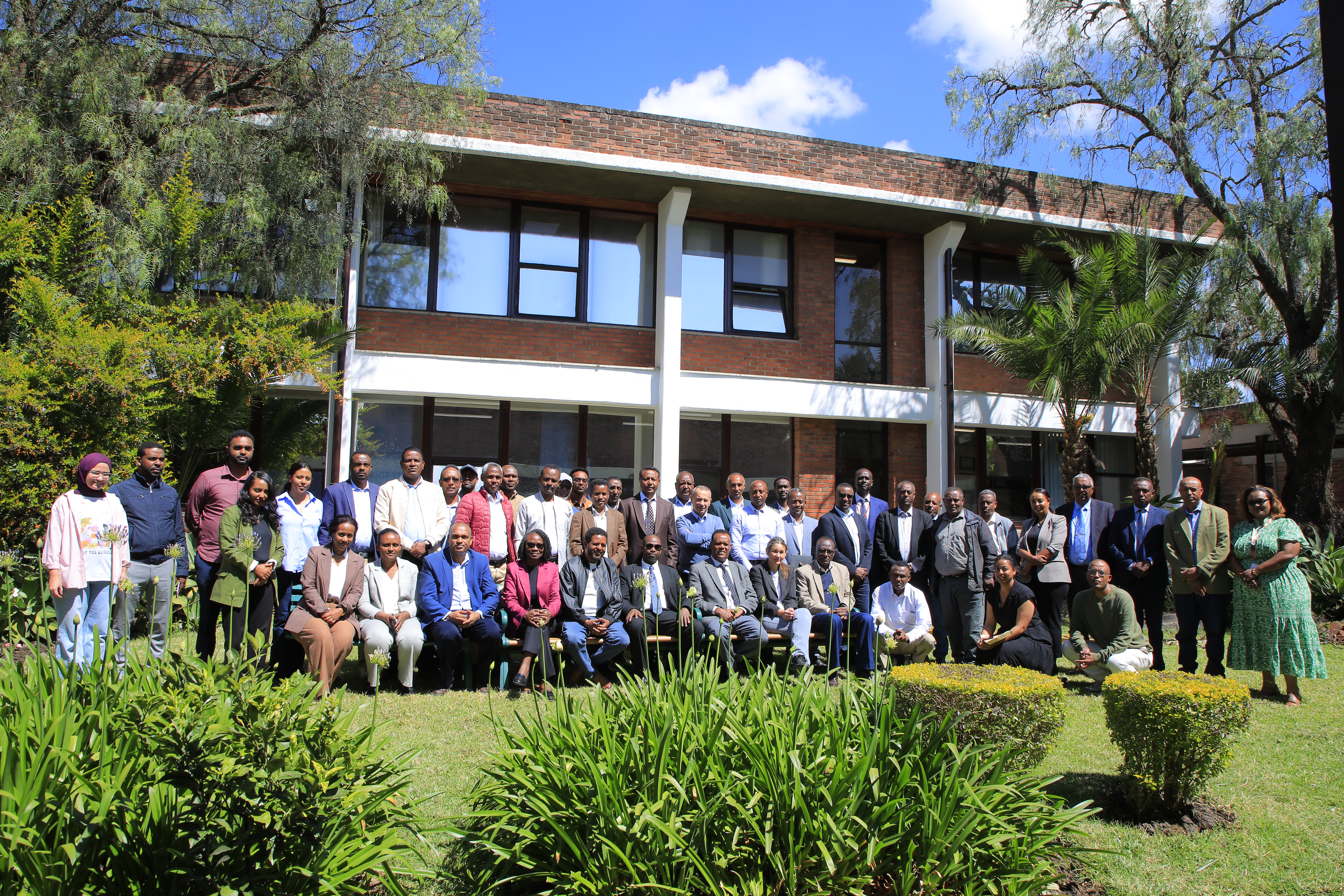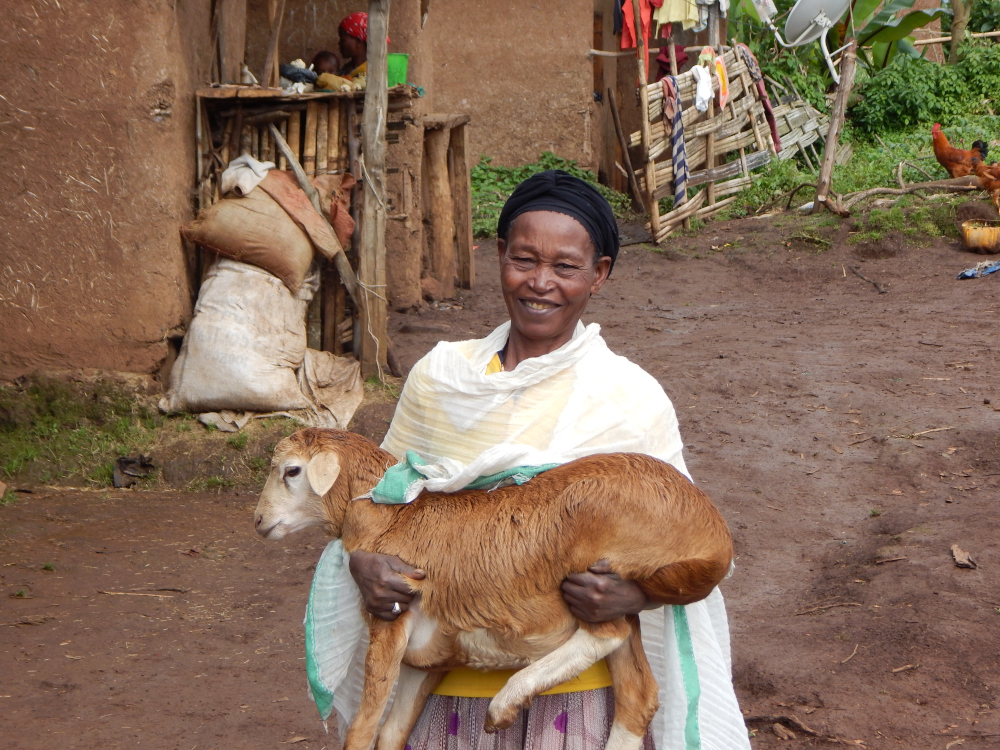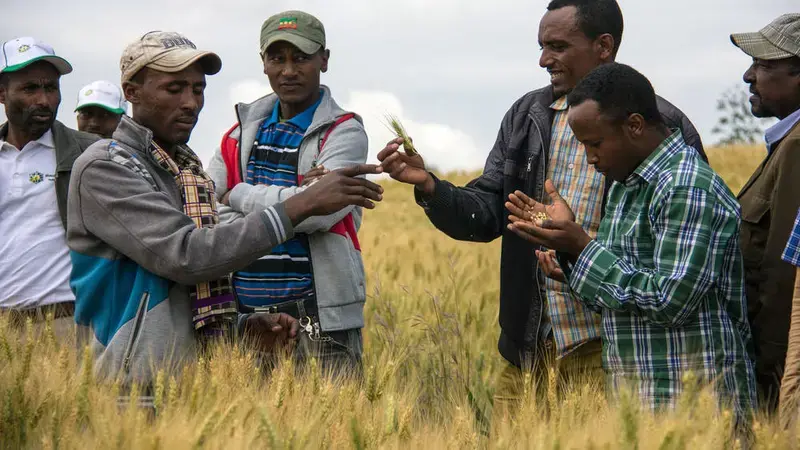
ICARDA Ethiopia Country Office established in 2008
Country manager: Zewdie Bishaw
Overview
ICARDA’s work in Ethiopia is made possible through the support of USAID, AfDB, ADA, IFAD, ACIAR, BMZ/GIZ. The key research for development partners includes the federal Ethiopian Institute of Agricultural Research and Regional agricultural Research Institutes (ARARI, OARI, SARI and TARI) and development partners such federal Ministry of Agriculture and Regional Bureaus of Agriculture (region to district level), federal and regional public seed enterprises (ESE, ASE, OSE, SSE) and seed producer cooperatives, CGIAR Research Program onWheat, CIMMYT,CGIAR Livestock, ILRI, IITA, GCDT, ICRAF, GMOFA, SLU, CIAT, and UWA.
Agriculture accounts for almost half of Ethiopia’s GDP, 60% of its export earnings and 80% of total employment, making sustainable improvements in agriculture vital to significantly advancing the country’s economic development.
Partnerships between Ethiopian agricultural research centers and ICARDA began in 1978, soon after ICARDA’s establishment. In 1985, Ethiopia formally joined a regional research program coordinated by ICARDA, which focused on the Nile basin before expanding to several countries in sub-Saharan Africa.
Collaborative research is implemented through regional and bilateral programs on biodiversity conservation, new varieties of food legumes, barley, wheat, the development of seed systems, water and land management, livestock, and capacity development.
Ethiopian scientists play a key role in ICARDA’s regional program with the Ethiopian Institute of Agricultural Research (EIAR) – a lead federal institute within research networks on wilt and root rot diseases in legumes and stem rust disease in wheat. Ethiopian scientists also help generate international public goods used across the globe, such as biotic stress-resistant varieties like rust-resistant wheat varieties, wilt-resistant lentil varieties and Asochcyta Blight-resistant Kabuli chickpea varieties.
Activities
-
Conserving biodiversity by protecting, documenting and utilizing Ethiopia’s vast pool of genetic resources.
-
The Technologies for African Agricultural Transformation (TAAT) Wheat Compact Project, which aims to strengthen production capacity and seed systems, and disseminate improved climate-resilient wheat varieties in cotton-based production systems in irrigated lowlands. Simultaneously, the project is introducing innovative production technologies and integrated crop management practices to increase agricultural productivity of staple crops.
-
Barley research: several barley elite lines were tested in different environments, and new improved varieties were released for cultivation, particularly malting barley varieties (e.g. Miscal (Kiflu-B), IBON 174/03, HB1963, HB 1964).
-
Development of ICARDA cool-season food legume (Kabuli chickpea, faba bean, lentil and grass pea) varieties with high yields and resistance to key diseases.
-
Introducing participator plant breeding methods where farmers are genuine research partners, making decisions on germplasm selection, even on design and trial implementation.
-
An EIAR-ICARDA breeding program that aims to halt a potential pandemic due to wheat stem rust disease by providing emergency replacements for susceptible varieties, while developing new varieties with durable resistance.
-
Producing high-yielding Kabuli chickpea varieties that are resistant to multiple diseases, suitable for early planting and offer higher yields and better prices for farmers.
-
Improving local livestock breeds through community-based breeding programs in which farmers themselves decide the breeding objectives, strategies, and institutional structures.
Development of watershed project technology components, including improved varieties and water management methods, as well as more efficient, sustainable use of natural resources.
-
Equipping unemployed Ethiopian youth with an innovative package of sheep-fattening practices and technologies to improve their income and access to markets.
-
Capacity development programs to strengthen the skills of researchers, extension staff and farmers through a variety of training programs, including some held by postgraduate students.
Field experimentation (in a randomized control trial setting) to enable the design of alternative agricultural extension and input service delivery systems that are efficient in enhancing the adoption of agricultural technologies.
IMPACT
-
ICARDA’s genebank system contains almost 12,000 germplasm accessions from Ethiopia. These include a range of food and feed crops as well as crop wild relatives and progenitors. About 13,000 samples have been shared with EIAR centers in the past 10 years for use in breeding programs.
-
Between 2001/02 and 2007/08, the national average lentil yield increased by 37% and production rose from 38,000 tons to 94,000 tons.
-
In the 2019/20 and 2020/21 cropping seasons, the Ethiopia Kabuli chickpea area was over 75,000 ha with a total production of 143,726 tons. The major Kabuli chickpea cultivars are released from ICARDA International Public Goods (IPG).
-
Since 1979, more than 700 Ethiopian researchers have benefited from training programs organized by ICARDA. They include 20 EIAR staff who completed their MSc or PhD research, with field work conducted within ICARDA research programs.
-
412 young people multiplied their ram numbers from one to more than six per fattening cycle, and another 437 achieved a shift from two fattening cycles a year to up to four.
-
Over 96 development agents and over 20 district, village, and regional agriculture experts obtained training in effective extension and input delivery systems. The results of the study have been documented in an ISI journal creating wider agricultural awareness among policymakers and development partners. Following the good results of the project, which carried out field experimentation, the Amhara region has continued experimenting on the new extension and input delivery approaches in other parts of the region.
-
A USAID-supported seed systems and scaling project on malt barley, faba bean and chickpea made significant achievements and impacts on agricultural growth and Productive Safety Net Program (PSNP) districts in four major crop producing regions of Ethiopia (Amhara, Oromia, SNNPR and Tigray administrative regions).
-
Expansion of malt barley from southeastern Ethiopia (Arsi and Bale Zones) to non-traditional areas in the central and northeastern highlands, and adequate linkage with malt factories to increase domestic malt barley production. Demonstrations of improved malt barley varieties increased grain yield by 2.6-53.3% with yields reaching up to 3.8 tons per ha.
-
About 21,833 farmers (20.4% female) and 4,863 other research-for-development actors (15.3% female) of the malt barley value chain participated in various field days

